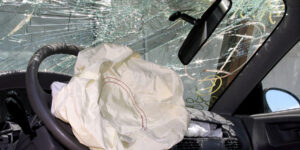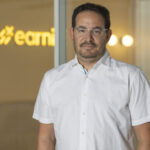Karen Clark scored a bonafide first when she launched catastrophe modeling company Applied Insurance Research (AIR) in 1987. With a focus on computer simulations, it was the only operation of its kind at the time. But property/casualty insurers didn’t initially embrace the concept.
Executive Summary
As catastrophe modeling pioneer Karen Clark moves into new territory with the launch of an open platform called RiskInsight at Karen Clark & Co., the former leader of AIR says a passion to give the industry better tools for pricing, underwriting and overall catastrophe risk management keeps her moving forward. Here, she looks back on career milestones and provides leadership insight into the qualities of an innovator.Back then, the United States had been in a low activity weather period after no major hurricanes hit a major metropolitan area in quite a while. Catastrophe insurers were centered in London at Lloyds, heavily reluctant to change. They weren’t even using computers to do their jobs and resisted the idea that they needed new tools.
“The last thing they thought they needed was a newfangled computer simulation model,” Clark recalls today. “When I think back on it, with my first presentation at Lloyd’s in 1987, I was the only woman in the room, I was American and seven months pregnant. Many of those guys probably thought it was some kind of joke.”
Still, Clark persuaded some early adopters to give AIR’s cat model a try.
“I did manage to convince some of the Lloyd’s people and several other underwriters. There were some forward-thinkers,” Clark said. “But it was a small fraction of the industry.”
Soon, the hurricane cycle worsened, and Clark’s models were both vindicated and increasingly sought out.
The Next Chapter: KCC
Clark’s innovation was simple but crucial, adding hypothetical simulation models and an industry property value database by ZIP code. AIR, later AIR Worldwide, made catastrophe modeling a ubiquitous part of the P/C insurance business, bringing lasting and dramatic change to an industry that has historically been slow to embrace new ways of doing business.
Clark’s story doesn’t end there, however. She sold AIR to ISO in 2002 (which is now part of Verisk). A few years later, she left the company she founded and teamed with longtime collaborator Vivek Basrur to launch Karen Clark & Co.
Clark said she moved on for positive reasons.
“ISO was a great parent company, and they gave me plenty of incentive to stay on, but [Basrur] and I got the idea to start a new company focused on exposure data quality, which was the hot issue after Hurricane Katrina,” Clark told Carrier Management. “Our mission was to develop new technology that would help insurers collect better data on their insured properties—better data to feed into the models.”
She added that there was quick interest in KCC.
“As soon as we set up shop, we were contacted by major insurers and reinsurers for consulting engagements around the models and their internal modeling process,” Clark said. “Through these consulting engagements we kept hearing consistent themes on frustrations with the traditional models—namely the lack of transparency, too much volatility from update to update, not enough flexibility, and finally, the rising costs of using the models.”
KCC initially focused on helping companies get better quality exposure data to put into their catastrophe models but dove back into the cat model space with a new, innovative twist. Dubbed RiskInsight, their bespoke catastrophe modeling system is the only one in the industry at this point with working open loss modeling platforms already used by insurers and reinsurers. (See related textbox: “Open Platform vs. Open Source.”)
RiskInsight takes cat modeling to another level, allowing users to access and customize the input assumptions to their specific underwriting needs. Cat modeling to date has only allowed the user to input exposure data, run the model and then assess the output.
“With us, they can see all [cat model] components and customize the assumptions,” Clark explained.
RiskInsight is itself an evolution. Clark noted that it began as an exposure management tool but that she and Karen Clark & Co.’s principals evolved it into a fully probabilistic model like those from AIR and RMS—with the added customization abilities that make their product unique.
“The first few years of [Karen Clark & Co.] we were primarily consultants,” Clark said. “This is how we learned about the struggles companies were having in using traditional models. We [then] said, ‘Hey, we can do it better,’ and came up with a tool that really makes our clients’ processes that much more efficient.”
In other words, Clark and colleagues saw that the cat modeling industry she helped create became ripe for change and innovation.
“Today’s model users are much more sophisticated than they were 25 years ago,” Clark said. “They want transparency, flexibility and lower modeling costs. Modeling costs have gotten quite high, because processes for using the models have gotten inefficient.”
RiskInsight’s open modeling platform starts with four components found in every catastrophe model: event generation, intensity calculation, damage estimation and financial loss calculation. But they’re transparent and can be customized with a number of built-in tools.
The platform’s WindfieldBuilder, for example, lets the user, in part, create customize tropical cyclone events. HazardMapper helps to create events anywhere in the world, including earthquakes, floods and severe storms. DamageRatesManager helps customers tailor vulnerability curves unique to their books of business.

Alongside those tools, Karen Clark & Co. is also launching RiskInsightConnect.com, a website where experts from around the world can place data model components and full models. Clients can download some of those components from the website and use them to build their own models, Clark said.
The company pitches RiskInsight, in part, as a system that helps lower modeling costs, make the process more efficient and gives customers greater control over their model assumptions.
Time will tell whether RiskInsight will broadly catch on. Clark explained that the product has attracted “the early adopters” so far, but asserted: “Once it is shown how effective these open platforms are, then every other company will come on board.”
Karen Clark & Co. employs about 20 people—a fraction of the roughly 150 at AIR when Clark sold it in 2002. Clark describes the current company as being “in the startup investment phase at this point.” While she declined to discuss revenue specifics, she said the company licenses its platform and generates recurrent revenue from those fees.
About 12 clients have signed up for RiskInsight, including Arch Re and Fermat Capital, as well as “several of the top 10 [property/casualty] companies in the U.S.,” Clark said. She added there are also “dozens of companies” that turn to KCC for its consulting services “in any given year.”
Clark offered that RiskInsight’s initial offerings of U.S. hurricane, U.S. storm surge and U.S. earthquake cat models will be expanded over time into all the major peril regions.
Inspiring a Team
Clark said she’s had to be a leader “in order to successfully create and keep advancing the cat modeling industry”—activities she’s been working at for decades.
A strong team also has been crucial. “Teams have to be inspired to implement the vision,” she added.
“It can be very challenging to keep your team inspired and motivated through the early period [of a launch] when there are a lot of doubters and naysayers,” she said. “Fortunately, I have been able to maintain my enthusiasm and remain tenacious even when there have been relatively few supporters and not many believers in the new technology.”
Clark said a leader inspires others to follow “with passionate vision and commitment and drive to make that vision a reality.”
“Highly-effective leaders don’t just set the vision and establish goals,” she said, adding that they also help the team succeed by leading the implementation process and making technical changes as necessary.
“The team wants to know where we are going and how we are getting there,” Clark said. “It is up to the leader to answer both” questions.
That may be, but the journey is “never a straight path,” Clark noted.
“You always have to have your finger on the pulse of the organization and market,” Clark said. “It is the process of continuously pointing and setting the direction to make sure the goals are achieved.
“As a leader,” Clark added, “I always have to be on top of exactly how we are achieving the goals. It may require changing tactics, changing the direction here and there to make sure we stay on track.”
In addition to tenacity and drive, which have been assets over the years, Clark has worked to keep her team focused and excited about the long-term vision. She’s also been a good listener, she said, keeping an ear on the industry and what it needed.
She’s also learned to change her approach to work, in ways that she said have improved the innovation process.
“Back in the early days at AIR, I was very inwardly focused on the models. My passion was making sure the models gave credible output, and I spent most of my time working with scientists and engineers making sure the models were very robust,” Clark acknowledged. “What I didn’t spend enough time on was being out in the marketplace and learning more about how those models needed to fit within our client processes.”
Today, Clark said, she “is out there with the clients along with being inward and working with scientists and engineers on the model.”
A Cat Modeling Passion
Clark explains that she thinks of herself “as someone who is passionate” about giving the insurance industry better tools to help do its job as far as pricing, underwriting and overall catastrophe risk management.
“As an innovator, my most important qualities are my tenacity and my drive to make great ideas reality,” she said. “That is an important part of it.”
Clark said that cat models themselves “are a very special innovation” and noted that there are few cat modeling companies in the industry, in part because it calls for a delicate mix of things to make them successful.
“The tricky thing about cat modeling is it is not all about the science and not all about the software,” she argued. “It is about having the right mix and then making sure that credible loss estimates are the results. I can tell you from experience that that doesn’t happen automatically. It takes a very rigorous and ongoing process of model validation.
“It is a really tricky business.”





















 Four P/C Insurers Are ‘AI Titans’; AI Impact Leaders Revealed: Research
Four P/C Insurers Are ‘AI Titans’; AI Impact Leaders Revealed: Research  Trump Transition Recommends Scrapping Car-Crash Reporting Requirement
Trump Transition Recommends Scrapping Car-Crash Reporting Requirement  Defense Lawyer’s Perspective: Connecting Insurers, Promoting Plaintiff-Style Solidarity
Defense Lawyer’s Perspective: Connecting Insurers, Promoting Plaintiff-Style Solidarity  Quantifying Social Inflation: How Swiss Re Developed an Index
Quantifying Social Inflation: How Swiss Re Developed an Index 
















